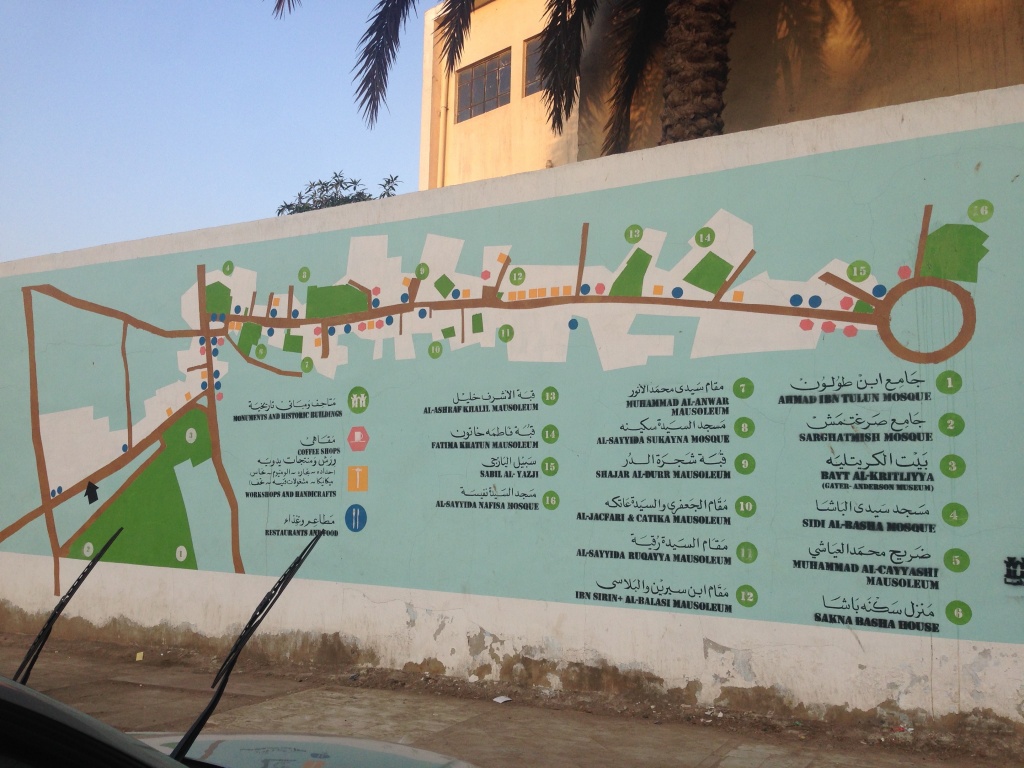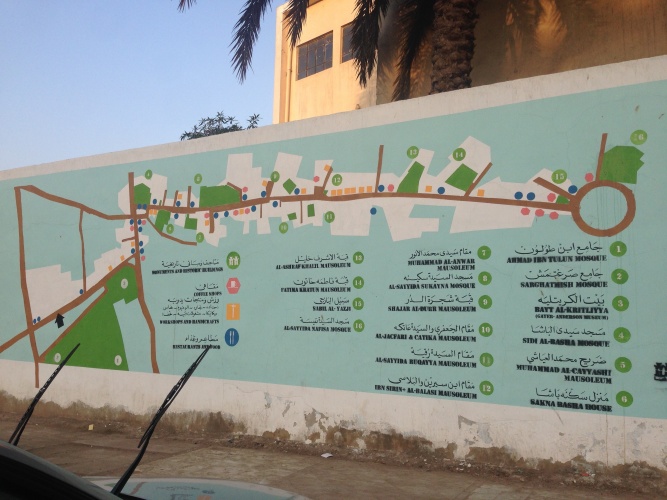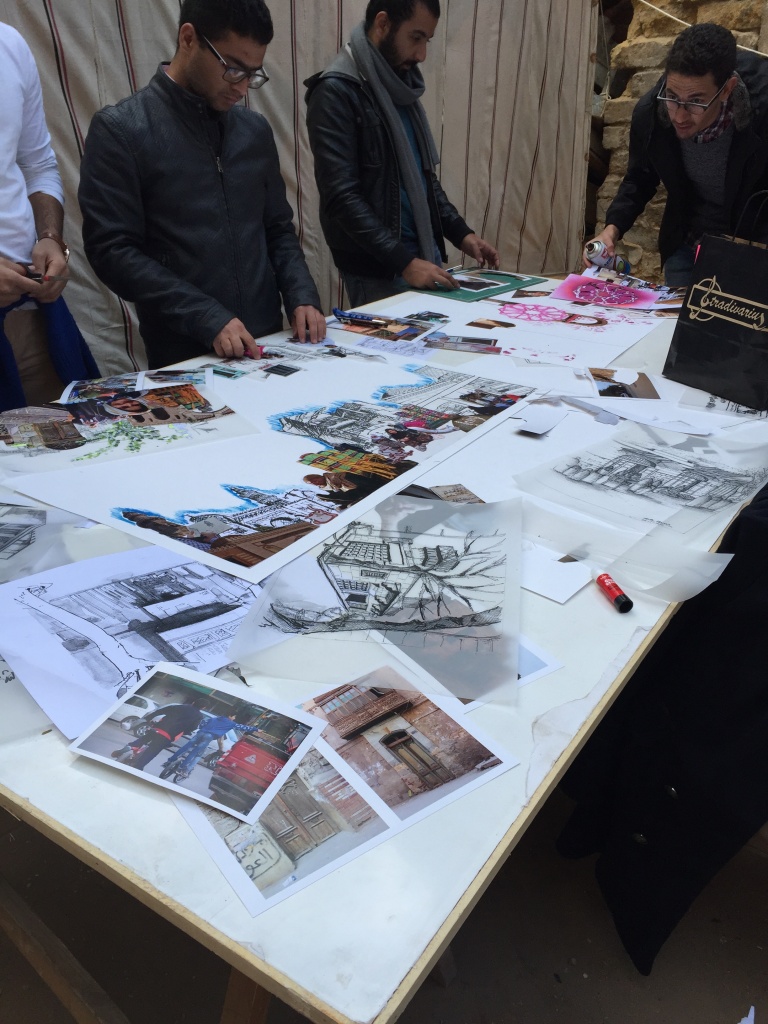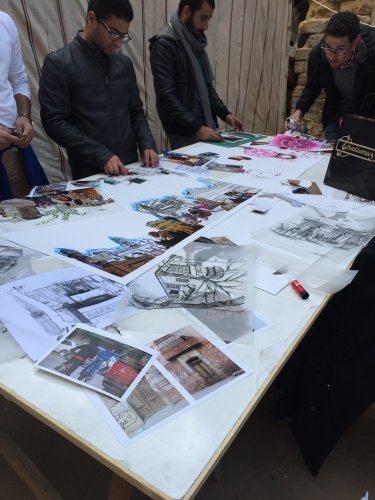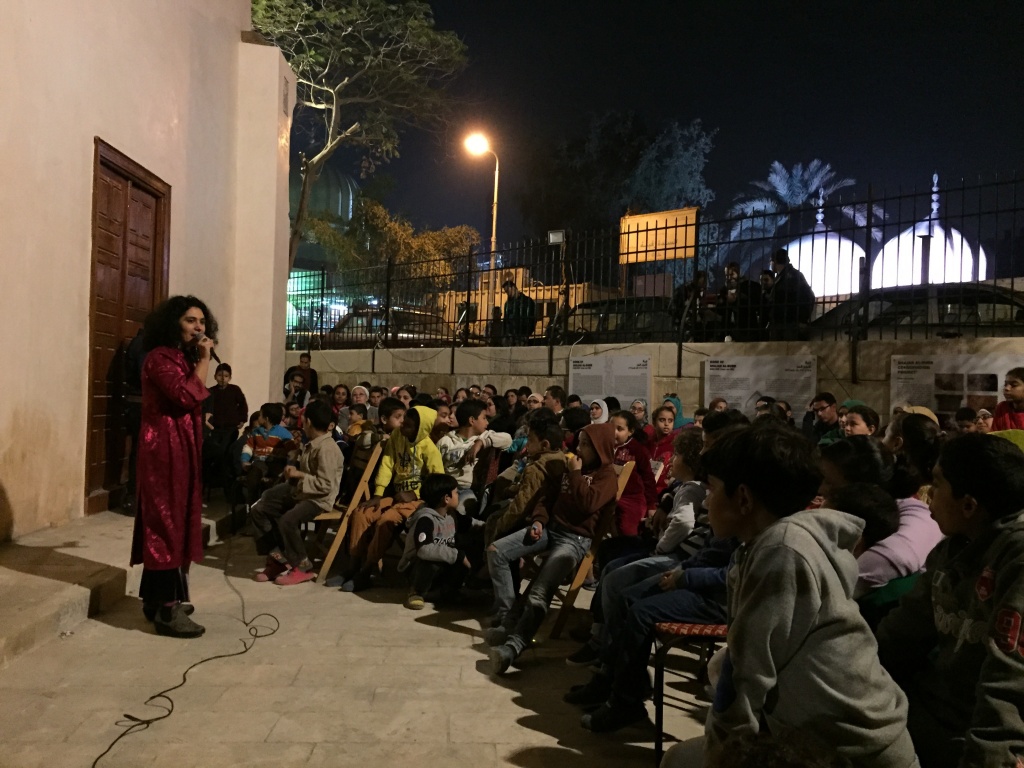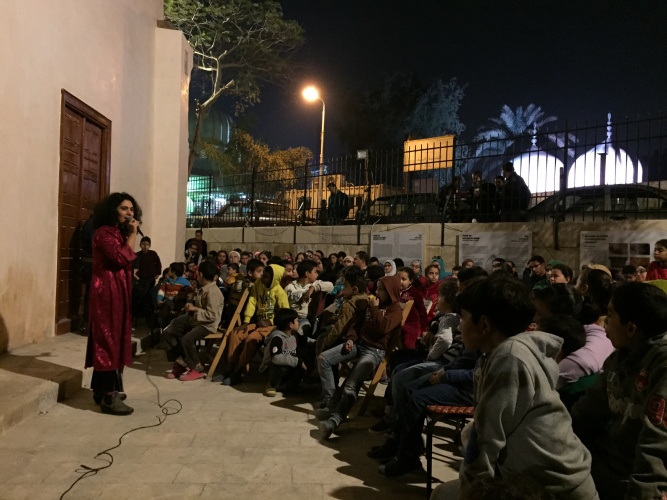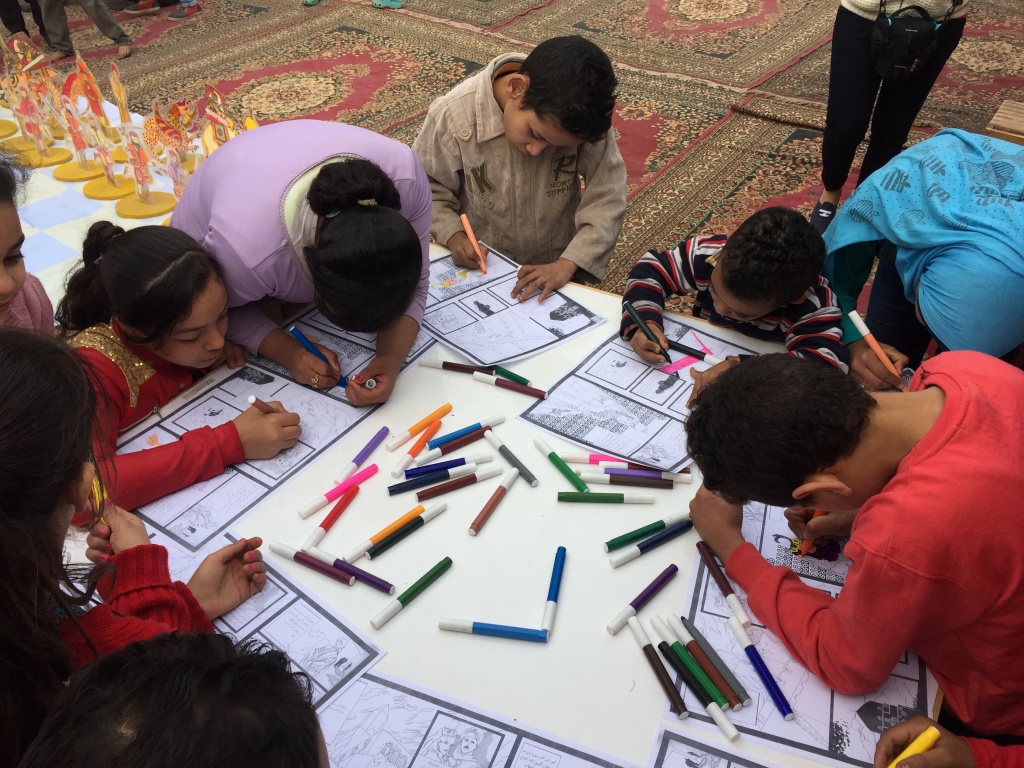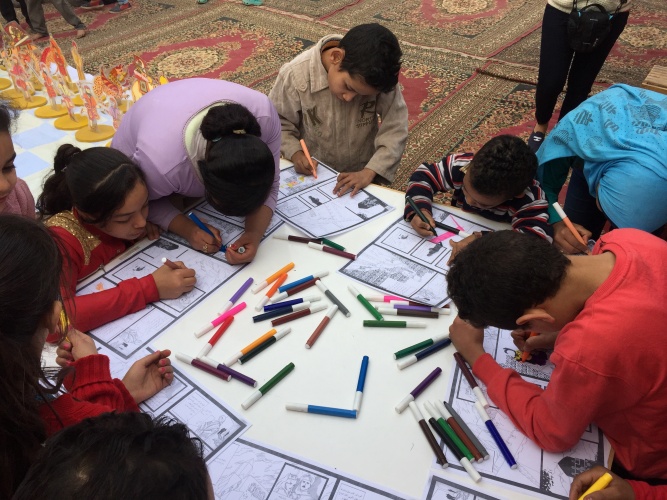My contribution to the World Café section of the CARMAH conference, “Otherwise: Rethinking Museums and Heritage,” was the concept of NGOization. Though it is an admittedly awkward and inelegant expression, I proposed it as my roundtable topic because I believe it captures some of the sociospatial dynamics currently unfolding in Cairo, where I conducted my dissertation fieldwork. Briefly stated, my research explores changes in the conception and management of the Egyptian capital’s architectural legacies after the so-called January 25th Revolution. In particular, it grapples with the recent proliferation of urban revitalization and rehabilitation projects by non-state actors and organizations. Though few of these groups are officially registered as non-governmental organizations (NGOs), questions about the nature and consequences of their interventions nevertheless led me to the idea of NGOization. The conference therefore presented itself as an opportunity to think through the concept in the context of heritage-making processes.
I began the roundtable by providing a definition of both NGOs and NGOization. With respect to the former, I drew on the work of Victoria Bernal and Inderpal Grewal (2014), who describe NGOs as heterogeneous institutional forms that are variously seen as “agents of neoliberalism, grassroots alternatives to the state, [and/or] parts of local civil society” (3). They point out that NGOs, in their pervasiveness, have a global reach and have become central political players on national and international stages. As the authors wryly observe, NGOs “seem present in every country and associated with every social issue and political debate” (6). However, they argue that this pervasiveness has tended to obscure the structural and ideological diversity of such organizations, leading to a reductive understanding of NGOs as a “unified domain” (7). In particular, these groups have come to be seen collectively as substitutes for the state and/or corporations, “taking the place of the state in the work on development and welfare, and providing services free or at much lower costs than private businesses” (6-7). Bernal and Grewal note that many NGOs proactively identify themselves in this way and may work to reinforce this distinction as a central aspect of their institutional identities, even as they appropriate “state-like and/or corporate aspects and influences” (6-7).
In contrast to this perception of NGOs as independent, autonomous entities, the authors maintain that they must be understood as deeply entangled with both the state and the market, often working–either directly or indirectly–to support, strengthen, and even create such institutions. As James Ferguson (2004) writes, it may be more analytically productive to think of NGOs and the myriad other groups associated with so-called civil society “not as ‘below’ the state, but as integral parts of a new, transnational apparatus of governmentality. This new apparatus does not replace the older system of nation-states…but overlays it and coexists with it. In this optic, it might make sense to think of the new organizations…not as challengers pressing up against the state from below but as horizontal contemporaries of the organs of the state” (392). One of the fundamental implications of this assessment of NGOs is that, by virtue of their entanglement with the “apparatus of governmentality,” they are political entities; however, I tried to emphasize further that the politicized character of NGO work is also embedded in the architecture of the organizations themselves–their ideological orientations, the projects they pursue, their funding mechanisms, the internal structuring of staff members, etc.
With this framing of NGOs, I turned to NGOization and defined it as a process of encroachment, one in which nongovernmental organizations gradually appropriate the social, cultural, economic, and even political territory traditionally associated with states and corporations. I noted that this definition differs somewhat from other uses of the expression–for example, Sabine Lang’s (2013) proposal that NGOization constitutes the institutionalization, professionalization, and bureaucratization of civil society organizations. It also diverges from Sonia Alvarez’s (2009) understanding of the term as “national and global neo-liberalism’s active promotion and official sanctioning of particular organizational forms and practices among…[various] sectors of civil society” (176). In contrast to these definitions, I wanted to foreground the calculated and deliberate movement of NGOs into new terrain–the proactive process by which they (and similar organizations) identify sociocultural, political or economic concerns and then develop projects and interventions to address them. However, in line with Bernal and Grewal, I suggested that this process, rather than entailing the exclusion of state and/or corporate institutions, has meant that NGOs frequently work in tandem with them. As I write these words, it strikes me that defining NGOization as a process of rapprochement (albeit not conflict-free) between NGOs and state and corporate institutions might better capture this relationship and the ways in which these different actors come together.
After laying down this conceptual track work, I went on to link my definition of NGOization to heritage-making processes. I began by pointing out that while NGOs and their work have received significant attention from anthropologists and other scholars, little of this attention has been directed at the practices, activities, and institutions associated with heritage-making. Of the few exceptions, I made note of Chiara De Cesari’s (2010) work on heritage NGOs in Palestine. In her analysis of a local heritage NGO’s efforts to put together a Palestinian art biennale, De Cesari argues that the organization “sees like a state by performing key operations of legibility (e.g., surveying) but also tries to act like one” through its implementation of specific projects (629). This framing of the NGO leads her to conclude that heritage in the Palestinian context can act as a “technique of government in the Foucauldian sense and as an integral part of a state-building (in addition to nation-building) project” (626). Although De Cesari never mentions NGOization directly, her proposal that heritage NGOs may try to “act like a state” through specific interventions gestures at the concept and dovetails nicely with my own application of the term to the post-2011 sociospatial transformations underway in Cairo.
My research explores the work of several local groups–all newly formed by urban elites and committed to “community-based” urban rehabilitation; however, during my roundtable, I introduced one organization working in the area of Historic Cairo, a UNESCO World Heritage Site.[i] The group, which was founded in late 2011 and is one of the only such organizations to be registered as an NGO, works on urban revitalization and heritage management on a secluded, residential street that is home to several important historic structures. In this location, the NGO has pursued a host of projects and interventions targeting both local residents and young architecture and urban planning professionals. Their work has included the creation of an architecture library and the organization of lectures, workshops, art exhibitions, and walking tours, but it has also involved extensive intervention in the area’s architectural heritage. To that end, the NGO has restored several major monuments on the street and has also developed a series of education programs targeting local children as well as an annual street festival replete with tours of local buildings, a crafts fair, art workshops, and music and storytelling performances.
Although it was highly schematic, I used my introduction to the Egyptian NGO’s work in Historic Cairo to raise some broader questions about NGOization and heritage-making processes. I asked participants at my roundtable a series of questions pertaining to the kinds of spaces such organizations produce, the ideologies and agendas underpinning their interventions, and the ways in which their work might diverge from and/or converge with that of other actors–particularly state institutions. Specifically, I asked the following: what kinds of heritagized spaces and historicized structures do NGOs produce–either intentionally or not? How are such spaces and structures similar to or different from those produced by state or international agencies? What are the ideologies and agendas organizing NGO projects in this domain? What might set NGOs apart from other heritage professionals in this regard–particularly with respect to heritage-making and efforts to produce a coherent narrative for the nation? Alternatively, how might NGO activities be implicated in state projects, policies, or agendas? How might they be vulnerable to appropriation by state or other actors–either intentionally or not?
These questions generated animated and stimulating conversations; however, the value of this dialogue stemmed less from the definitive answers it produced than from the quality and texture of the discussions themselves. The format of the World Café proved remarkably congenial, and it was quickly apparent to me how intellectually productive it could be to bring people from diverse professional, academic, and geographic backgrounds together in an informal context. As the moderator, I found it particularly liberating as it freed me of the need to present a definitive picture, neatly packaged, and to pretend I had all of the answers. Instead, I was able to ask questions and follow ideas without restraint.
That being said, the conversations did much to thicken my framing of the concept of NGOization–the varied perspectives and commentaries provided by the roundtable participants added multiple layers to my understanding of how NGO work can operate both to advance state interests but also to challenge and subvert them. Specifically, it was rightly pointed out that NGOs can be critically self-reflective and self-aware, cognizant of their fraught role as knowledge-producing institutions. It was also noted that it is essential to invert the gaze and to look at how citizens (who may be distrustful of the state) might perceive NGOs as access to resources and/or rights–in other words, these organizations may be viewed as social, political, and economic bridges by local community members. Likewise, it was observed that the state itself is an amorphous phenomenon, and just as NGOs need to be recognized as diverse entities so too must we avoid viewing state institutions as homogenous, unified forms. To an extent, these interventions are already familiar; however, their introduction in the context of the roundtable helped throw into relief the problematically seamless character of the narrative with which I had begun. In other words, they highlighted for me how conducive the format of the presentation is to flattening difference and unruly ideas, to excising anything that does not quite fit.
As I write these final words, I have Beverley Butler’s assertion reverberating in my head: heritage is pharmakonic. It is fundamentally ambivalent, capable of operating in varied contexts as both a positive/benevolent and negative/malevolent social force. This conception of heritage, which Butler has explored in her own work (2011), captured the sense of uncertainty and inconclusiveness regarding NGOization that underpinned my roundtable; however, it also gestured at the essential instability, variability, and unpredictability of all of the social categories and phenomena to which I connected the concept.
[i] Historic Cairo is an area of several square kilometers located in the heart of the Egyptian capital. It is home to an impressive architectural legacy that dates back more than 1000 years and includes madrassas, hospitals, khanqahs, sabil-kuttabs, and even private homes. In fact, despite repeated periods of neglect and decline, the district still includes some 600 registered monuments (Antoniou et al. 1985). During the past four decades, and in particular since the area was added to the UNESCO list of World Heritage Sites in 1979, these structures have been the target of a range of restoration projects sponsored by both state agencies and international organizations.
